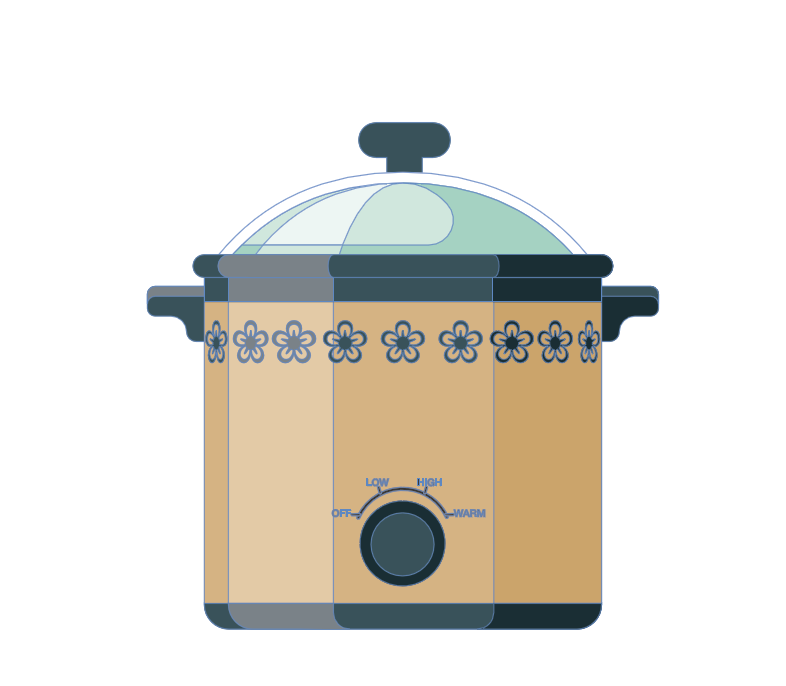
One-Pot Meals
By Kate Mirly, MS, RDN, LD, Boone Hospital Center Registered Dietitian
Coming home to the smell of a fresh-cooked meal is a satisfying feeling. Even more satisfying is using little effort to make the meal a reality. That’s the beauty of one-pot meals. Slow cookers, instant pressure cookers and large stock pots can all be used to make entire meals without dirtying too many dishes.
Slow cookers are popular due to their set-and-forget nature. Cooking a meal is as easy as adding ingredients to the pot, setting the cooking level and returning hours later to serve your meal. Some slow cookers come with thermometer attachments to monitor the internal temperature of meats and will keep food at a certain temperature for a prolonged period of time. Almost anything can be made in a slow cooker — soups, stews, meat and vegetable blends, and more. One of my favorite ways to make using a slow cooker even more effortless is to combine my ingredients ahead of time in a plastic bag and freeze them to use later. (Remember to label the bag with the name of the meal, cooking time, and any extra ingredients that need to be added.)
Slow cookers usually reach a simmer point of about 210 degrees Fahrenheit — the high and low settings set how much time it takes for the food to reach this simmer point. As a general rule, the low setting takes about four extra hours to reach the simmer point than the high setting. If a recipe calls for three hours on the high setting, you can set it for seven hours on the low setting.
Instant pressure cookers have recently been showing up on people’s countertops. They are as easy to use as a slow cooker and cook food in a fraction of the time.
Unlike a slow cooker, an instant pressure cooker needs at least one cup of liquid added to the pot. If you don’t want your food submerged in liquid while pressure cooking, accessories are available to elevate food off the bottom of the pot. In fact, there are many pressure cooker accessories, including trays for hard-boiling eggs, steaming vegetables or rice, silicone molds, and so much more.
Instant pressure cookers usually have preprogrammed proper cooking times for various types of foods or cooking methods. Conversion charts in the owner’s manual can help you determine the approximate cooking time if you’re adapting a recipe from another cooking method.
For example, see the differences between using a slow cooker and instant pressure cooker to prepare beans. I have found beans to be one of the easiest and cheapest foods to make from scratch and use as a plant-based protein in many meals.
How to Cook Dry Beans
Slow Cooker
- No soaking is required before cooking.
- Place dry beans in the pot and add water until it reaches two inches above the beans.
- Allow room for the beans to expand — they will at least double in volume during cooking.
- Do not add more than 2 pounds of beans in a 5-quart slow cooker.
- Cook on low for 3 to 6 hours until
- beans are tender.
Pressure Cooker
- Soaking beans before cooking is optional. Soaking speeds up the actual cooking time and usually produces a better texture. Soak the beans in water for 4 to 8 hours before cooking. Discard the soaking water and use new water to cook. Cooking times for soaked beans can range from 5 to 10 minutes depending on the type of bean. Chickpeas tend to take the longest to cook — up to 15 minutes from soaked.
- Due to change in volume as the beans cook, never fill the pot more than half full with dry beans.
- Pour water over the dry beans and cook between 25 to 40 minutes. The exact cooking time will vary based on the kind of bean.